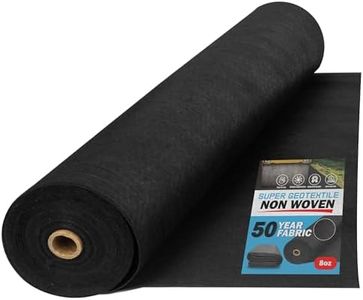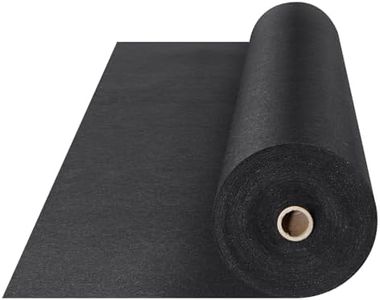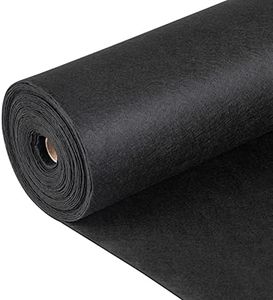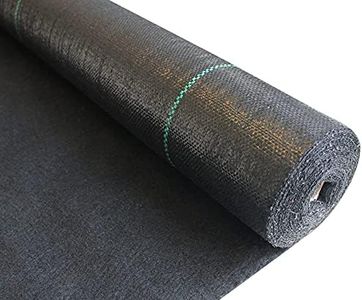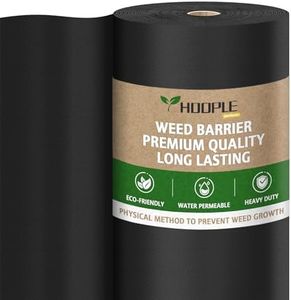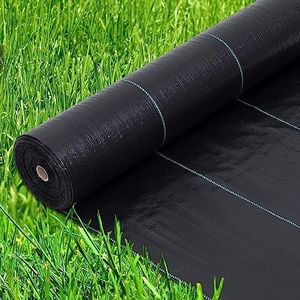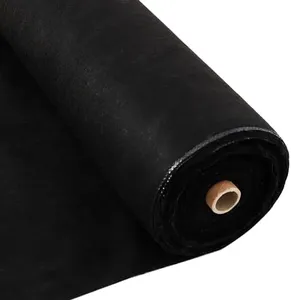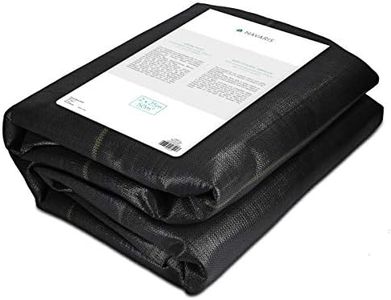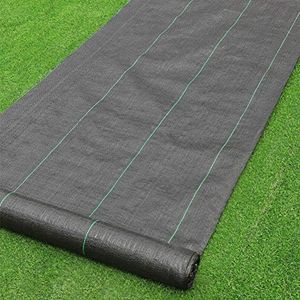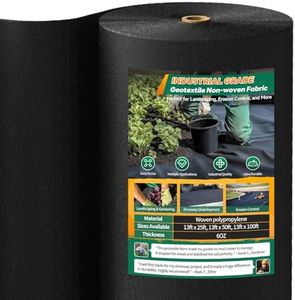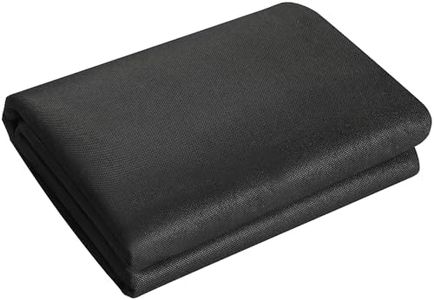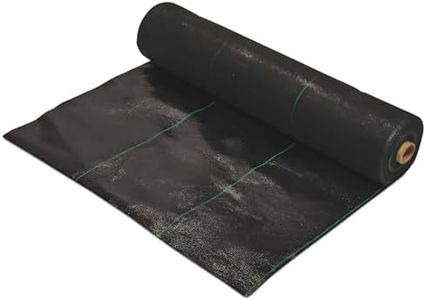10 Best Non-Woven Landscape Fabrics 2025 in the United States
Our technology thoroughly searches through the online shopping world, reviewing hundreds of sites. We then process and analyze this information, updating in real-time to bring you the latest top-rated products. This way, you always get the best and most current options available.

Our Top Picks
Winner
Super Geotextile 4, 6, 8 oz Non Woven Fabric for Landscaping, French Drains, Underlayment, Erosion Control, Construction Projects - 8 oz (3x50)
Most important from
1729 reviews
The Super Geotextile 8 oz Non Woven Fabric is a robust option for various landscaping and construction needs. With its heavy-duty 8-ounce weight, it offers superior strength and durability, making it well-suited for demanding applications like French drains, erosion control, and construction underlayment. Its non-woven construction enhances its toughness, ensuring it can withstand harsh conditions without easily tearing or wearing out. The fabric is also designed to be UV and rot-resistant, promising longevity and reliable performance over many years. This makes it an excellent choice for projects exposed to sunlight or moisture, where material degradation is a concern.
Installation is made easy with the availability of multiple sizes, which minimizes waste and allows for a precise fit to your project needs. This convenience can save both time and resources during installation. Its versatility is a noteworthy advantage, as it can be employed in a wide range of projects, from gardening to construction.
One potential consideration is the weight and package dimensions, which might make handling slightly cumbersome for some users, particularly when dealing with larger areas. Additionally, while its durability is a key strength, the 8 oz weight may not be necessary for lighter gardening tasks, where a lighter and more economical fabric might suffice.
The positive feedback indicates high consumer satisfaction, especially in its primary applications as a weed barrier and erosion control fabric. This product is best suited for users seeking a long-lasting, heavy-duty solution for professional or substantial landscaping and construction projects.
Most important from
1729 reviews
VEVOR Geotextile Landscape, 4ft x 100ft 8 oz Non-Woven PP Drainage 350N Tensile Strength & 440 N Load Capacity, for Ground Cover, Garden Fabric, French Drains, Black
Most important from
2060 reviews
The VEVOR Geotextile Landscape Fabric is a strong and durable option for various landscaping and gardening needs. Made from 8 oz non-woven polypropylene, it offers excellent tensile strength (350N) and load capacity (440N). This means it can handle a lot of stress and weight, making it suitable for demanding applications like ground cover, garden fabric, and French drains.
Its 4ft x 100ft size is practical for large areas, and being black helps with weed control by blocking sunlight, which reduces water evaporation and retains soil moisture. The fabric is also designed for easy installation—it's lightweight and can be cut to any desired size, making it user-friendly even for beginners. Its needle-punched design provides good permeability, allowing for efficient water drainage and air penetration, which is beneficial for soil health.
However, one drawback is that the product information does not mention UV resistance, which could be a concern if exposed to direct sunlight over extended periods. Additionally, at 20.3 pounds, it may be slightly heavier compared to some other options on the market, which might make handling a bit cumbersome for some users. Despite these minor downsides, this landscape fabric's versatility and robust performance make it a top choice for various applications, from gardening to construction projects.
